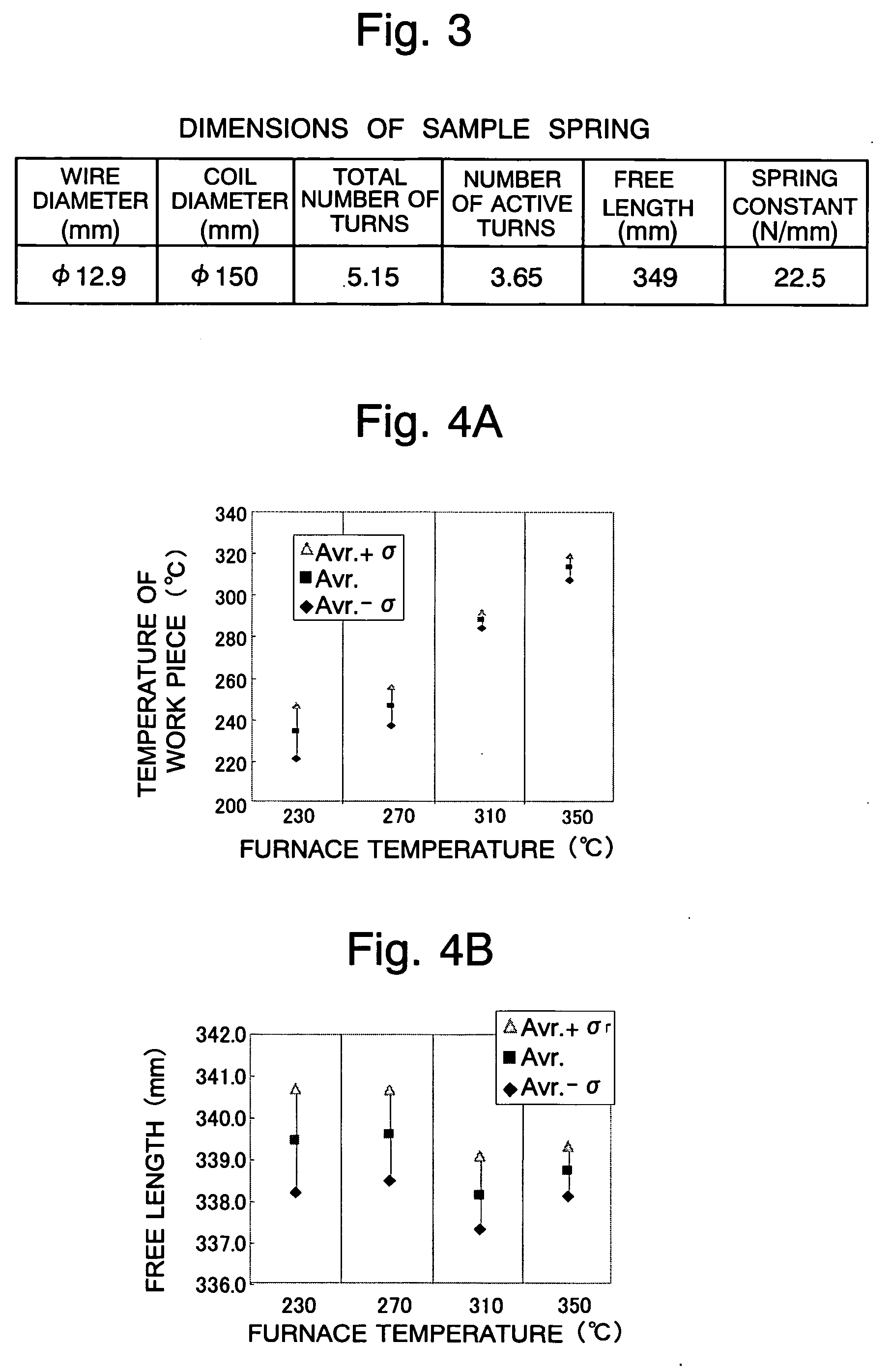Process for producing high-strength spring
- Summary
- Abstract
- Description
- Claims
- Application Information
AI Technical Summary
Benefits of technology
Problems solved by technology
Method used
Image
Examples
Embodiment Construction
[0029] A test for confirming the effect of the method according to the present invention was conducted using a steel material having a chemical composition shown in FIG. 1. Several pieces of coil springs were manufactured by a process shown in FIG. 2. The dimensions of the coil springs are shown in FIG. 3.
[0030] As shown in FIG. 2, the test samples were divided into two groups (A) and (B). The sample springs belonging to group (A) were prestressed and shot-peened in a warm environment where the temperature of the springs was within the range from 265 to 340° C. Then, the springs were submerged under water for rapid cooling. In contrast, the springs of group (B) were naturally cooled (or air-cooled) after being prestressed and shot-peened in the same manner. The shot peening was performed under the following condition: arc height=0.37 mm, coverage=100%.
[0031] A tempering treatment for a spring includes the step of maintaining a quenched spring at a predetermined tempering temperatu...
PUM
| Property | Measurement | Unit |
|---|---|---|
| Temperature | aaaaa | aaaaa |
| Temperature | aaaaa | aaaaa |
| Fraction | aaaaa | aaaaa |
Abstract
Description
Claims
Application Information
 Login to View More
Login to View More - R&D
- Intellectual Property
- Life Sciences
- Materials
- Tech Scout
- Unparalleled Data Quality
- Higher Quality Content
- 60% Fewer Hallucinations
Browse by: Latest US Patents, China's latest patents, Technical Efficacy Thesaurus, Application Domain, Technology Topic, Popular Technical Reports.
© 2025 PatSnap. All rights reserved.Legal|Privacy policy|Modern Slavery Act Transparency Statement|Sitemap|About US| Contact US: help@patsnap.com



